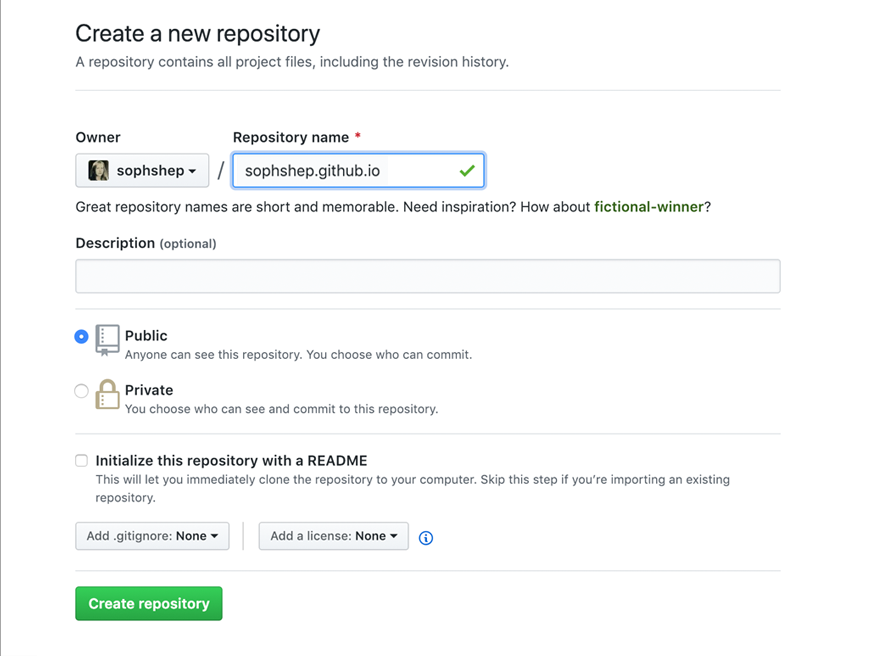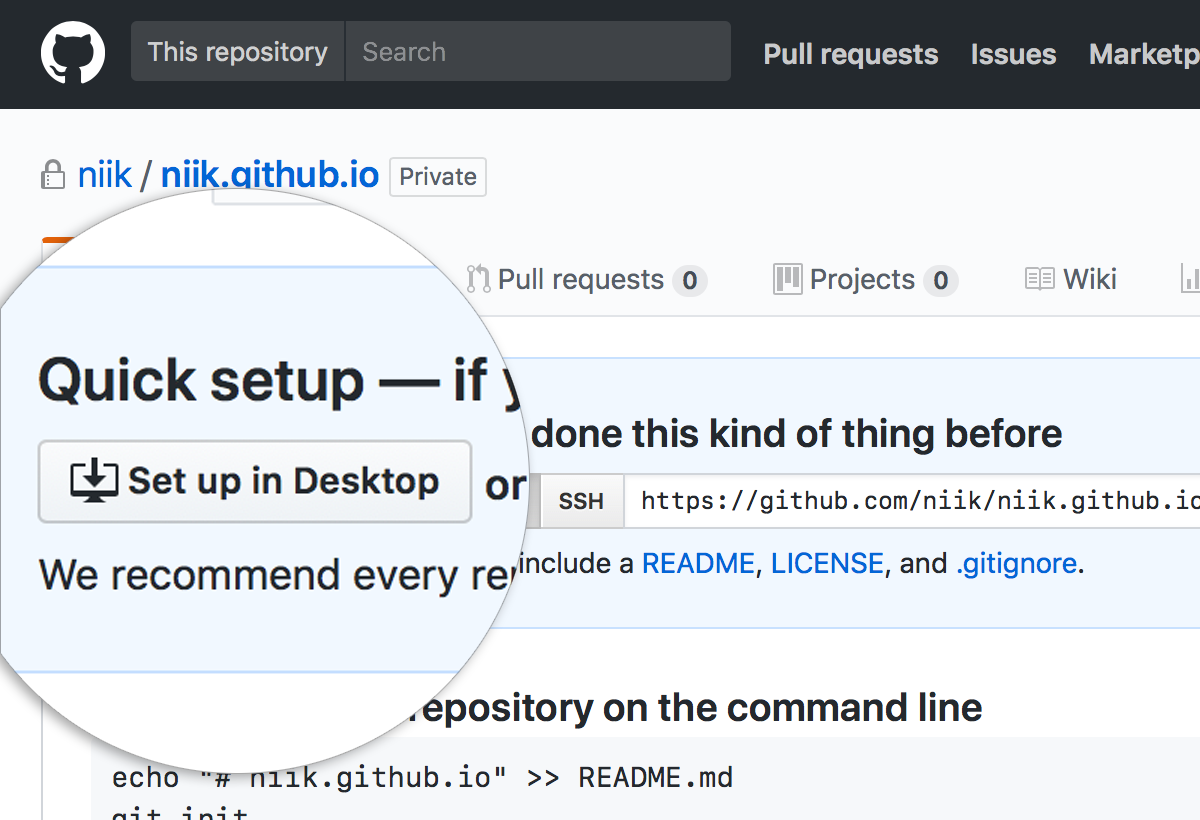
Websites for you and your projects.
Hosted directly from your GitHub repository. Just edit, push, and your changes are live.

Hosted directly from your GitHub repository. Just edit, push, and your changes are live.
1
Head over to GitHub and create a new public repository named username.github.io, where username is your username (or organization name) on GitHub.
If the app doesn't open, launch it and clone the repository from the app.

2
Go to the folder where you want to store your project, and clone the new repository:
If the app doesn't open, launch it and clone the repository from the app.

3
Grab your favorite text editor and add an index.html file to your project:
<!DOCTYPE html>
<html>
<body>
<h1>Hello World</h1>
<p>I'm hosted with GitHub Pages.</p>
</body>
</html>
4
Enter the repository, commit your changes, and press the publish button.

5
Fire up a browser and go to https://username.github.io.
